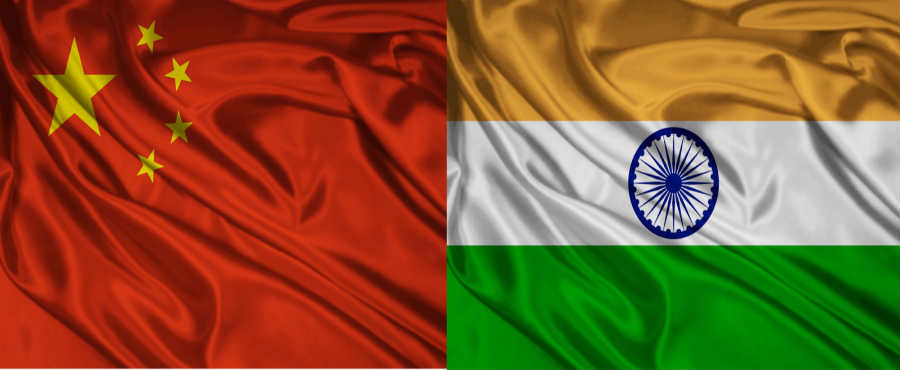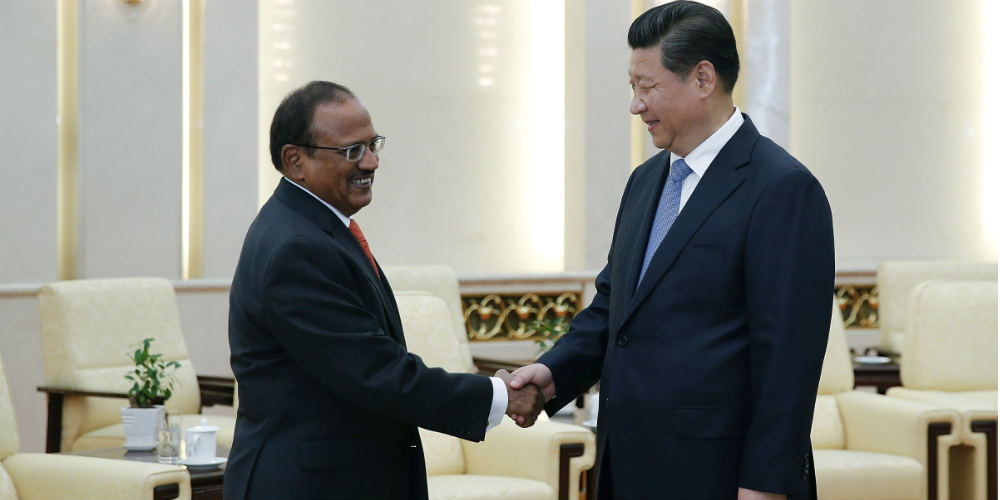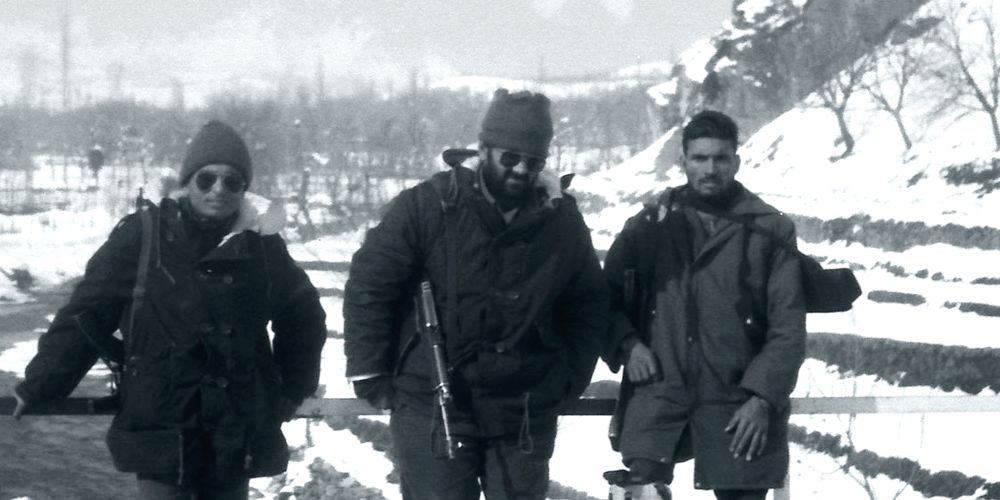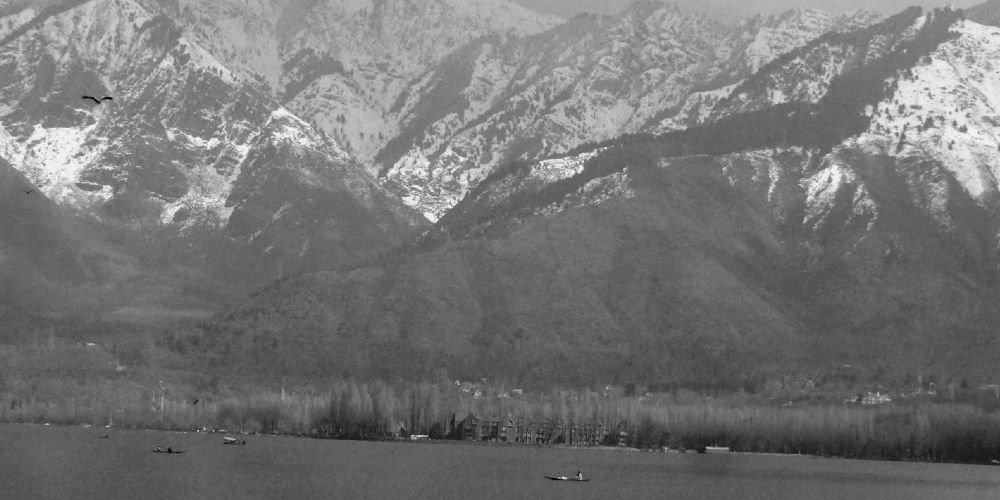(The article was first published on August 14, 2007 on NDTV.com. The article link on that site is currently broken so have republished it here)
“I remember many a time when our senior generals came to us, and wrote to the defence ministry saying that they wanted certain things… If we had had foresight, known exactly what would happen, we would have done something else… what India has learnt from the Chinese invasion is that in the world of today there is no place for weak nations… We have been living in an unreal world of our own creation.”
The statement was made by then Indian Prime Minister Jawaharlal Nehru in Rajya Sabha, in 1963, after India’s humiliating defeat at the hands of China. It is an eye opening statement from a leader who always viewed international politics from his own utopian prism.
The defeat in the 1962 border war made him realise that there is indeed no place for weak nations in world politics.
“In the political and diplomatic fields too, significant changes came through the 1962 episode, bringing more realism,” notes the official Indian history of the border war between India and China.
The India-China war was an eye-opener for India. But even after 45 years, the people of India are not aware of the circumstances and reasons that led to India’s defeat. The popular belief among the masses is that China betrayed Indian trust and attacked our defenses in the Ladakh and North East Frontier Agency (NEFA) region.
But the government inquiry in to the defeat (still classified), the official history of the Government of India (1992), declassified documents from China and United States of America, and a huge amount of research on the subject by Indian analysts and experts reveal startling facts about the war.
The most significant reason of our defeat is that the political leadership of that time failed India. It was not Chinese betrayal, but then Prime Minister Jawaharlal Nehru and his Defence Minister V K Krishna Menon’s arrogant belief that they would solve the crisis through diplomacy and that China would not dare attack India despite the latter’s ‘Forward Policy’.
This policy and the duo’s assumption of Chinese in-action in event of crisis was firmly supported by then Intelligence Bureau Director B N Mullick, who, according to some analysts, was also responsible for misleading the political leadership.
After going through the available material important factors which possibly led to India’s defeat on the Eastern Front emerge. They are:
- Erroneous assessment by the political leadership that China will not react to India’s ‘Forward Policy’ in NEFA region and Ladakh.
- Ill-equipped and ill-prepared Indian army.
- China’s unfounded perception of Indian designs to seize Tibet.
Damning report
After the humiliating defeat, the Indian Army entrusted Lieutenant-General Henderson Brooks and Brigadier P S Bhagat to inquire into the debacle. Although the terms of reference set for them were very limited, the duo dug deep and discovered a great deal about the initial formulation of the “Forward Policy” and how the Indian Army was forced into the conflict by the political leadership of that time.
The Henderson Brooks-Bhagat Report is still classified but a British Correspondent, Neville Maxwell, had seen the report and he published a summary of what the report contains. How he got to see the report is unclear but rumour has it that a senior minister passed a copy of the report to him.
The Indian Government published an official history – The History of the Conflict with China, 1962, which was written by the History Division of the Ministry of Defence in 1992. Both the reports point out that an ill-equipped and ill-prepared Indian Army was forced to take on superior Chinese PLA.
Infact, General K S Thimayya, the Chief of Army Staff (COAS) until 1961, wrote in Seminar magazine in 1962 that, “I cannot even, as a soldier, envisage India taking on China in an open conflict on its own; we could never hope to match China in the foreseeable future. It must be left to the politicians and diplomats to ensure our security.”
Despite this, the political leadership, backed by the Intelligence Bureau, ordered the army to setup forward posts in all areas that India claimed its own. This included areas which were disputed.
The ‘Forward Policy’, which called for establishing posts in the disputed areas often behind Chinese forward posts, had been continuing since 1954 despite repeated protests by the Chinese Government.
Nehru’s going ahead with this policy was based on assumptions. He was of the belief that China would not oppose Indian patrols and border outposts out of fear of an India backed by both the United States of America and Soviet Union.
The rationale behind the policy was to setup border posts and drive out the Chinese from the areas which India considered its own.
Several Indian Army officers opposed the policy as militarily perilous as they were aware that the Indian Army was not adequately prepared to face the Chinese force in the frontiers.
The official Indian version of the war states that: “In the years 1959-1960, LT General S P P Thorat, GOC-in-C Eastern Command, had made an appreciation about the magnitude of Chinese threat to Indian borders in the Eastern Sector and had made projections about his requirements to meet that threat. But the Army HQ as well as the Defence Minister paid little heed to Gen Thorat’s appreciation. It was not even brought to the notice of the Prime Minister.”
Politicisation of Army HQ
Instead of heeding sound military advice, Nehru replaced the military top brass with more submissive officers, who would carry out his orders and eventually lead to India’s humiliation. This overt politicisation of the army high command was one of the reasons why India lost.
To top it all, irresponsible and jingoistic statements by the political leadership precipitated matters and gave a handle to the Chinese to attack Indian posts in ‘self-defense’.
Then Home Minister of India, Lal Bahadur Shastri, declared on February 4, 1962 that “If the Chinese will not vacate the areas occupied by her, India will have to repeat what she did in Goa. She will certainly drive out the Chinese forces.”
Nehru also gave a statement on October 12, 1962, that he had “ordered the Indian Army to throw the Chinese out.”
Driving out the Chinese forces was an optimistic declaration by the political leadership but the ground situation was different. Indian Army was logistically weak and ill-prepared to take on the superior Chinese forces that were well trained in mountain warfare.
Although Indian and Chinese forces were involved in a series of clashes along the border throughout 1962, significant fighting of the India-China Border War took place from October 10, 1962 to November 20, 1962. The fighting took place in Walong, Tawang, and Aksai Chin.
According to military analysts, a series of factors led to Indian Army’s debacle. The Indian intelligence apparatus in the Himalayas was lacking. They had no clear indication of Chinese strength, mobility and tactics, especially the human wave attacks, states a report.
Roderick MacFarquhar, in his book The Origins of the Cultural Revolution, Vol. 3: The Coming of the Cataclysm 1961-1966, blamed the Indian intelligence community for not properly analysing Chinese domestic and diplomatic developments. According to him, they relied on CIA briefings, newspaper account and dispatches from the Indian embassy in Beijing about China’s economic crisis, its split with the Soviet Union, and the Taiwan crisis. Depending on these reports, Indian political, army and intelligence leadership concluded that China will not react aggressively to India’s ‘Forward Policy’.
Even militarily, successive inquiries in the border war would reveal, Indian Army was not ready to take on the Chinese. Very few Indian soldiers had operated in mountain areas. The troops were using obsolete weapons unsuitable for mountain warfare and that too were in short supply. The Chinese were well supplied as they had stocked supplies in Tibet and their soldiers were well acquainted with mountain warfare.
Logistical, leadership failure
The Indian soldiers, on the other hand, did not even have enough winter clothing and shoes. Even the line of communications was difficult as there was no road network. The supplies and reinforcements for the troops were sent most by air, states the official Indian history.
Apart from that the troops were short on artillery and ammunition and the artillery they had was very often immobile in the mountains.
Besides, the morale of the forces was at its lowest. The decision making in the army was totally ad-hoc. The official Indian history states: “Some of the decisions were patently incomprehensible. For example, when 2 Rajput were stopped in their way to the plains for re-induction, they were sent to Kameng, a totally new area for them, instead of being sent back to Walong Sector with which they were quite familiar. The result was confusion all around.”
“Unplanned induction of troops on ad hoc basis and the consequent breaking of original formations ruined the cohesiveness and compactness of fighting formations,” the report states.
One such incident, which merits attention is the government’s order attack and evict the Chinese force that was threatening Dhola Post. The field commanders argued that it was militarily impossible to take on the superior Chinese forces at the point of confrontation, below Thagla Ridge near McMahon Line.
According to a study, sometime in September, the Army HQ ordered the troops to capture a Chinese post 1000 yards north-east of Dhola Post and contain the Chinese concentration south of Thagla Ridge. The army official inquiry into the war, the Henderson Brooks-Bhagat Report, while commenting on the order state: “The General Staff, sitting in Delhi, ordering an action against a position 1000 yards north-east of Dhola Post is astounding. The country was not known, the enemy situation vague and for all that there may have been a ravine in between [the troops and their objective], but yet the order was given. This order could go down in the annals of history as being as incredible as the order for the Charge of the Light Brigade.”
The political leadership and the Army HQ then decided to give the task of attacking and driving the Chinese forces off Thagla Ridge to the newly formed IV Corps. Interestingly, the command of this new formation was given to Lieutenant General B M Kaul, who had never commanded an active fighting outfit.
The official history also blamed Kaul for frequently ignoring the chain of command. The report accused him of directly approaching the Chief of Army Staff, bypassing the GOC-in-C and also giving orders directly to junior officers, bypassing a chain of middle officers.
General Kaul was subsequently relieved after the ceasefire was announced. He later resigned from the army.
No use of IAF
Another important factor, which many analysts and defence experts believe could have altered the outcome of war, was India’s decision of not using the air force. The Indian Air Force (IAF) was not used for any offensive action and was only confined to air dropping supplies to the troops.
Former Air Vice-Marshal A K Tewary, in an article in Indian Defence Review, said that had India pressed in the IAF, the outcome of the war would have been different.
“In the final analysis, the use of combat air power would have turned the tables on the Chinese and the 1962 war could well have been a debacle for China,” he said in the article.
He blamed the IB Director B N Mullick for exaggerated assessment of attack by Chinese bombers on Indian cities if India had used the Air Force.
At one point of time, Nehru got so worried that he sent two letters to then US President John F Kennedy requesting the support of US Air Force in fighting the Chinese. The letters, delivered between November 15 and November 20, 1962, are still classified.
But S Gopal, in his biography of Jawaharlal Nehru, has summarised the content of the letters: “Nehru, without consulting anybody in his Cabinet, wrote two letters to Kennedy describing the situation as ‘really desperate’ and requesting the immediate dispatch of a minimum of 12 squadrons of supersonic all-weather fighters and the setting up of radar communications. American personnel would have to man these fighters and installations and protect Indian cities from air attacks by the Chinese till Indian personnel had been trained.”
“Nehru also sought two B-47 bombers squadrons from the US to enable India to strike at Chinese bases and air fields, but to learn to fly these planes Indian pilots and technicians would be sent immediately for training in the US,” Gopal had written.
But on November 20, 1962, China declared a unilateral ceasefire. India lost extensive territory. In NEFA, the Chinese captured huge territory, advanced nearly 200 km and almost reached the Assam plains. In the end, both the sides withdrew their troops 20 km from new boundary lines on December 1, 1962.
Appropriate time to strike
Some analysts have suggested that India was at fault in this war and that it pursued an aggressive policy and provoked China, which left them with no alternative but to act in self defense. This assessment is incorrect as historical evidence suggests that China was well aware of Indian moves and was waiting for an appropriate time to strike, which it did, once it got respite from its external problems.
China was facing a threat of invasion from Taiwan during the initial months of 1962. But once, that situation eased in June, it committed more troops to border with India.
Careful analysis of historical events suggests that Chinese attack October 20, 1962 was a well planned move and it coincided with the Cuban Missile Crisis, an event which brought the world on the brink of obliteration.
The Chinese move is appropriately explained by the official Indian history, which state: “It is indeed plausible to speculate that the Chinese deliberately timed their attack to coincide the Cuban missile crisis. The superpowers, who were engaged in a deathly struggle, ensured the required degree of freedom for the Chinese to use force against India without fear of their interference.”
China declared unilateral ceasefire on November 20, 1962, immediately after the resolution of crisis in the Caribbeans.
Indian designs to seize Tibet?
Another important factor behind the flaring up of the border war between India and China was China’s unfounded perception of Indian designs to seize Tibet.
According to analysts, after the declassification of documents regarding the 1962 War in both China and India, new facts have emerged about the Chinese deliberations before the war.
Chinese policymakers, analysts believe, held the view that India was colluding with the US to detach Tibet from China. A need to punish Indian aggressive ‘Forward Policy’ in the border areas was definitely a reason for the Chinese attack.
But their perception that India was deliberately working towards restoring the status quo in Tibet also played a part in their decision to teach India a lesson.
New studies reveal that CIA financed and armed a major resistance movement inside Tibet during the 1950’s. China suspected that India was an active party to this movement, a fact which is still unconfirmed. Then Director of Intelligence Bureau, B N Mullick, acknowledged CIA’s activities in Tibet during that time in his book The Chinese Betrayal (1971).
Whether India knowingly helped CIA in their Tibet operations or not will be known after India declassifies government papers of that time. But China believed India played an active role and it was one of the reasons for which they decided to punish India.
Brave soldiers
The 1962 War has left a deep scar on the Indian psyche. The political and military leadership sacrificed officers and soldiers under them despite knowing that the army was not prepared to take on the Chinese forces in a terrain where we were logistically weak and did not have proper supply lines.
One thing that united the entire nation in that hour of grief was the exemplary courage shown by the Indian soldiers in the adverse of conditions. It is said that they did not abandoned their rifles even if it meant certain death.
Their courage can be summed up in the immortal song, Aye mere watan ke logon, jara ankh me bharlo paani penned by Poet Pradeep after the defeat.
The moving song brought tears to the eyes of Indians when it was sung by Lata Mangeshkar at an all party meeting on January 26, 1963 in New Delhi. As the song ended, Nehru could not hold his tears and broke down completely.
Till today, the song reminds Indians of the supreme sacrifice of Indian jawans in the Himalayas.




One Comment
Supreme sacrifice indeed. Wish Nehru had become a little practical and first raised 7-8 battalions dedicated for the himalayan adventure and then ordered the army to throw the chinese out. The defeat, even though I was not born at that time, still is disturbing. We lost a major portion of our mother land. Alas, now no one seems to be concerned.